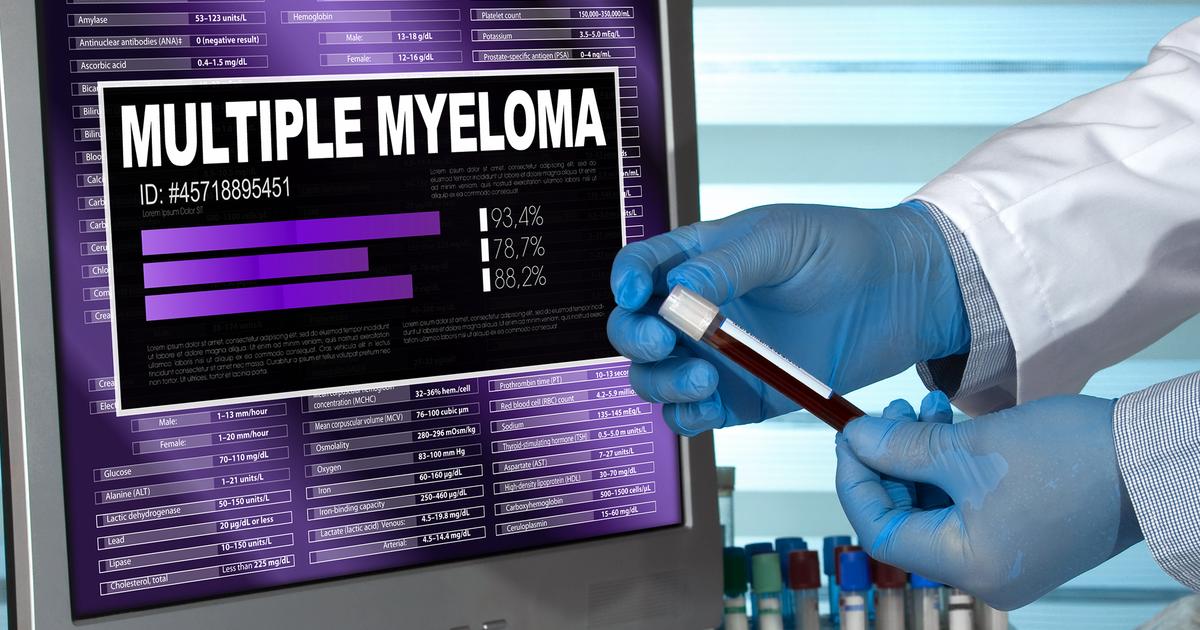Cancer Types And The Cells They Originate From
Cancer encompasses a wide range of diseases that occur when a genetic mutation in a cell causes it to grow quickly, multiply easier, and live longer. This mutation causes the accumulation of these non-functional malignant cells that invades into the tissues around the body. Cancer causes widespread damage and compromises entire organ systems when left untreated. The biggest reasons for cancer development in an individual is due to cellular DNA damage and genetic factors. Cancer can develop in any type of cell in the human body. When cancer occurs, it is named after the particular area or type of tissue it originates from. Once cancer has spread beyond that particular tissue or part of the body, it is referred to as metastatic cancer but still retains the name of its origination point.
Learn about the overarching types of cancer and where they originate from now.
Sarcoma

Sarcoma is the term used to describe cancer that initially develops in the cells that make up connective tissue. Soft tissues are the types of tissue that surround, support, connect, and protect an individual's internal body structures and organs. Soft tissues include fat, nerves, joint linings, muscle, blood vessels, and tendons. Over seventy variations of sarcoma have been identified in medical research as of the present day. The cause of most cases of sarcoma is unknown, but individuals who have familial retinoblastoma, neurofibromatosis type 1, lymphedema, and herpesvirus are known to be at an increased risk of developing sarcoma. In addition, individuals exposed to certain herbicides and industrial chemicals, or those who have undergone previous radiation therapy are also at an increased risk of developing sarcoma. Imaging tests and tissue biopsies are used to make a sarcoma diagnosis. The most common types of sarcoma are vascular sarcoma, smooth muscle sarcoma, fibro histiocytic sarcomas, and liposarcoma.
Read about the next type of cancer and where it originates now.
Carcinoma

When a patient's cancer initially develops in the skin cells or the cells that make up the lining of certain other organs, it is called carcinoma. Carcinoma is the most common type of cancer that develops in the human body, and it has the potential to metastasize to other regions of the body but is not as aggressive as other forms of cancer. Basal cell carcinoma is a type of carcinoma that develops in the lowest part of the epidermis or basal layer and is the most common form of skin cancer. Squamous cell carcinoma, the second most common type of skin cancer, develops from the flat cells that make up the skin's outermost layer (squamous cells). Renal cell carcinoma is the most prevalent form of cancer in the kidney and develops in the cells that make up the tubule linings. Ductal carcinoma in situ, the most common form of breast cancer, forms in the cells that make up the milk duct lining. Invasive ductal carcinoma develops when a ductal carcinoma penetrates past the duct wall into local breast tissues.
Get the details on another type of cancer and where it originates now.
Leukemia

When an individual's cancer originally develops in their bone marrow, it is referred to as a form of leukemia. The most common types of leukemia originate in white blood cells, but leukemia can form in other blood cells types as well. Types of leukemia are categorized based on the speed at which they progress and the type of blood cell they occur in. Acute lymphocytic leukemia is a fast-growing form of cancer that begins in the tissue where blood cells are produced (bone marrow). Chronic lymphocytic leukemia is slow-growing and begins in the white blood cells within bone marrow. Acute myeloid leukemia and chronic myeloid leukemia begin in the immature cells that form platelets, white blood cells, or red blood cells in the bone marrow, and they invade the blood. Hairy cell leukemia starts in the bone marrow when it makes an excessive amount of white blood cells called lymphocytes.
Uncover the next form of cancer and where it originates now.
Lymphoma

Cancer that starts in an individual's lymphocytes, the cells in the immune system responsible for fighting off pathogens, is referred to as lymphoma. Cancerous lymphocytes that form and grow in the body of a lymphoma patient can travel throughout the lymphatic system and bloodstream. These cancerous lymphocytes can spread to other large organs in the lymphatic system such as the spleen, liver, bone marrow, and lungs. Small lymphocytic lymphoma is a form of cancer similar to chronic lymphocytic leukemia, but it has a different presentation. Hodgkin lymphoma is a rare form of lymphoma associated with Reed-Sternberg cells, a characteristic type of enlarged abnormal lymphocyte. Non-Hodgkin lymphoma is the classification given to any form of lymphoma in a patient that does not fit into the small lymphocytic lymphoma distinction and does not involve Reed-Sternberg cells. Diagnostic tests of a patient's blood and biopsies of the lymphatic tissues are utilized in the diagnosis of lymphoma.
Continue reading to reveal another type of cancer and how it gets its name now.
Myeloma

When cancer originates in an individual's plasma cells, which are responsible for the production of infection-fighting antibodies, it is referred to as myeloma. Myeloma forms in specific plasma cells called plasma B cells when they are inside an individual's bone marrow. Myelomas are a type of plasma cell dyscrasia that can be classified into one of several forms. Multiple myelomas are the variation where numerous areas around the patient's body are affected and are the most common form of myeloma. Plasmacytoma is the form of myeloma characterized by a single focal site of myeloma cells in the body. Plasmacytoma often manifests as a tumor in a patient's skin, lung, bone, or muscle. Localized myeloma is a form similar to plasmacytoma, but it includes the added criteria that neighboring sites of the tumor have been exposed. Extramedullary myeloma is a classification of myeloma characterized by tissue involvement outside the patient's bone marrow, including the muscles, lungs, or skin.
Read more about the various types of cancer and the cells they originate from now.
Glioma

Glioma is a type of tumor that starts in the glial cells in the brain. Glial cells are the cells in the central nervous system that are supportive and do not conduct electrical impulses. These types of cells are responsible for providing insulation and support for neurons by surrounding them. Gliomas are considered intra-axial brain tumors due to their tendency to develop within the brain substance and mingle with normal brain tissues. There are six different types of glial cells and several types of gliomas that can form in the central nervous system. Astrocytomas are tumors that begin in the astrocytes or connective tissue cells. Brain stem gliomas develop in the glial cells of the brain stem. Ependymomas are tumors that develop out of the cells responsible for lining the spinal cord and brain ventricles. Mixed gliomas are brain tumors that include more than one type of glial cell. Oligodendrogliomas are tumors that develop in the oligodendrocytes or glial cells of the cerebrum. Optic pathway gliomas are cancerous tumors that develop in the cells that make up the optic chiasm or nerve.
Discover additional types of cancer and the cells they originate from now.
Blastoma

Blastoma is a form of cancer that starts in developing cells in the body of a child or fetus. The type of cells that form blastomas are referred to as precursor cells, which are stem cells that can differentiate into any type of cell in the body. Blastomas develop when these precursor cells do not differentiate into their cell types properly during early childhood, infancy, and before birth. There are several different types of blastomas. A hepatoblastoma is a tumor that develops in the liver that usually affects children who are three years old or younger. Nephroblastoma describes when a tumor develops in the precursor cells in the kidney. Medulloblastoma is a term used to describe a malignant tumor that develops in the precursor cells of the cerebellum in the brain. Neuroblastoma is a tumor that develops in precursor nerve cells located outside of the brain, including those in the adrenal glands, pelvis, abdomen, chest, and upper spine. Pleuropulmonary blastoma is a tumor that develops in the immature cells of the lungs that usually affects individuals under five years old.
Keep reading to uncover more types of cancer and details on the cells in which they originate now.
Schwannoma

Schwannoma is a term used to describe cancerous tumors that develop in certain types of nerve cells, referred to as Schwann cells, in the nervous system. Schwannomas may also be referred to as neurolemmomas, neuromas, soft tissue sarcoma, or neurilemomas in the medical community. Schwannomas can affect Schwann cells in the peripheral nervous system and the cranial nerves. Schwann cells are the cells in the peripheral nervous system responsible for producing the myelin sheath around the axons of the nerves. Some of the most common sites of schwannoma development include the nerve that connects the inner ear to the brain, the sciatic nerve of the leg, the group of nerves in the lower back, and the brachial plexus nerves in the arm. Most schwannomas do not have an identifiable cause, but some may be associated with a genetic disorder like schwannomatosis, Carney complex, and neurofibromatosis 2. Symptoms of schwannomas do not manifest until the tumor begins to put pressure on the nerves around it.
Reveal additional information on types of cancer and their corresponding cells now.
Meningioma

Meningioma is a tumor that develops in the cells that make up the meninges, the layers of tissue encapsulating the spinal cord ad brain. Meningiomas are most likely to develop in the arachnoid cells in the meninges. Grade I meningiomas are benign and tend to grow slowly, grade II meningiomas are quicker growing and contain atypical cells, and grade III meningiomas are malignant and metastasize to other parts of the body quickly. The most prevalent locations where meningiomas are found include the top outer surface of the brain and at the base of the skull. Sphenoid meningiomas develop on the sphenoidal ridge behind the eyes, olfactory groove meningiomas develop near the nerves that connect the brain to the nose, suprasellar meningiomas develop near the pituitary gland, and spinal meningiomas develop in the spine at chest level. The symptoms of a meningioma depend on which part of the central nervous system is being affected by the growing tumor.
Learn about another type of cancer now.
Melanoma

Melanoma is a form of cancer that develops in the skin cells responsible for producing pigment. These cells are referred to as melanocytes, and they are located in the upper layer of the skin and produce melanin, a pigment that provides the skin with its coloring. When the cells of the skin are exposed to ultraviolet rays from the sun, the melanocytes are stimulated to produce more melanin, which makes the skin tan. While this process is designed in the body to protect the tissues that sit under the skin, it can also cause problems. Ultraviolet exposure can cause excessive damage to cellular DNA in the melanocytes, which may cause them to grow quickly and reproduce out of control.
Four types of melanoma can develop in an individual. Superficial spreading melanoma grows on the surface of the skin for an extended period before it affects other tissues underneath it. Lentigo maligna melanoma occurs most often in older individuals and may grow slightly faster than superficial spreading melanoma. Acral lentiginous melanoma grows under the nails, on the palms of the hands, and the soles of the feet. Nodular melanoma grows deep into the skin and aggressively spreads to other tissues.
